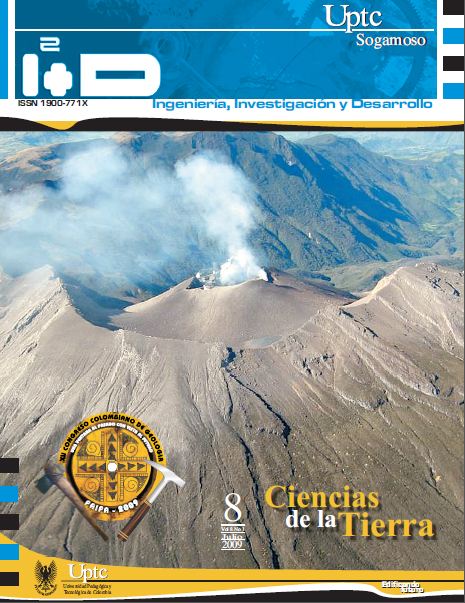Diagenetic features in the "paleozoico de La Jagua", Garzón-Huila

Abstract
The creek Caguancito, in Garzón (Huila) outcrops the best exhibition of the unit known as "Paleozoico de La Jagua". From the detailed raising of the section, 560 hand samples were collected and 50 thin sections were carried out from which 24 were stained with red alizarine and potassium ferricyanide for its diagenetic analysis. From this analysis, some typical processes of each one of the main diagenetic environments that reacted on the rocks of this unit such as micritization and fibrous calcite in isopachus (marine environment), precipitations were identified. It has been determined a successive exhibition of the unit, with influence of meteoric waters, where calcite meteoric cement filling was allowed along, with a progressive burial that further lead to processes such as the calcite ferrous cement fillings, carbonates silifications and pressure-dissolution structures among others. The obtained information has allowed to determine the posdeposition conditions and to the elaboration of a generalized model of diagenetic evolution.
Keywords
paleozoico de La Jagua, diagenesis, diagenetic environment, micritization, cementation, silicification
References
- Adams, A.E.; Mackenzie, W.S. (1998): A colour atlas of carbonate sediments and rocks under the microscope, Londres: Manson publishing.
- Benito, M. I y Mas, R. (2002): “Evolución diagenética de los carbonatos arrecifales de la formación Torrecilla en Cameros y de los carbonatos continentales suprayacentes (Kimmeridgiense inferior-titónico) en el sector de Soria”, En Journal of Iberian Geology, No. 28, pp. 65-92. Cuenca de Cameros, N. España.
- Boggs, Sam Jr. (1992): Petrology of sedimentary rocks, New York, Macmillan Publishing Company.
- Chafetz, H.S. (1986): “Marine peloids: a product of bacterially induced precipitation of calcite”, En Journal of Sedimentary Petrology, No. 56, pp. 812- 817.
- Dickson, J.A.D. (1965): “A modified staining technique for carbonates in thin section”, En Nature 205, P. 587.
- Gómez-Cruz, A. D. J.; Chevalier, E. C. (2003): “Sedimentology and paleontology of the Carboniferous of La Jagua, Huila, Colombia”. En International Congress on Carboniferous and Permian Stratigraphy.
- Gómez-Cruz, A. D. J. (2005): “Foraminíferos del carbonífero superior (Morrowan) del 'Paleozoico de La Jagua', Huila”, En X Congreso Colombiano de Geología, Bogotá.
- Gómez-Cruz, A. D. J; Moreno-Sanchez, M; CastilloGonzález, H. (2007): “Ciclos de sedimentación durante el carbonífero superior (Morrowan) en el “Paleozoico de La Jagua” Huila, Colombia”. En XI Congreso Colombiano de Geología. Bucaramanga.
- Mansour M., A. S. (2004): “Diagenesis of Upper cretaceous rudist bivalves, Abu Roash area, Egypt, A petrographic study”. En: Geología Croática. 57:1 pp. 55-66.
- Stibane, F. Y Forero, A. (1969): “Los afloramientos del paleozoico en La Jagua (Huila) y Río Nevado (Santander del Sur)”, En: Geología Colombiana, 6: pp. 31-66, Universidad Nacional de Colombia, Bogotá.
- Tucker, M. Y Wright V. P. (1990): Carbonate sedimentology. Londres: Blackwell Scientific Publications.
- Velandia, F. P.; Ferreira, G. I.; Rodríguez, y Ñustez, A. (1996): Memoria explicativa levantamiento geológico de la plancha 366 - Garzón, Informe 1321, Bogotá, Ingeominas.
- Villarroel, C. YMojica, J. (1988): “El paleozoico superior (carbonífero-pérmico) sedimentario de Colombia, afloramientos conocidos y características generales”, En Geología Colombiana, No. 16, pp. 81-87, Universidad Nacional de Colombia, Bogotá.